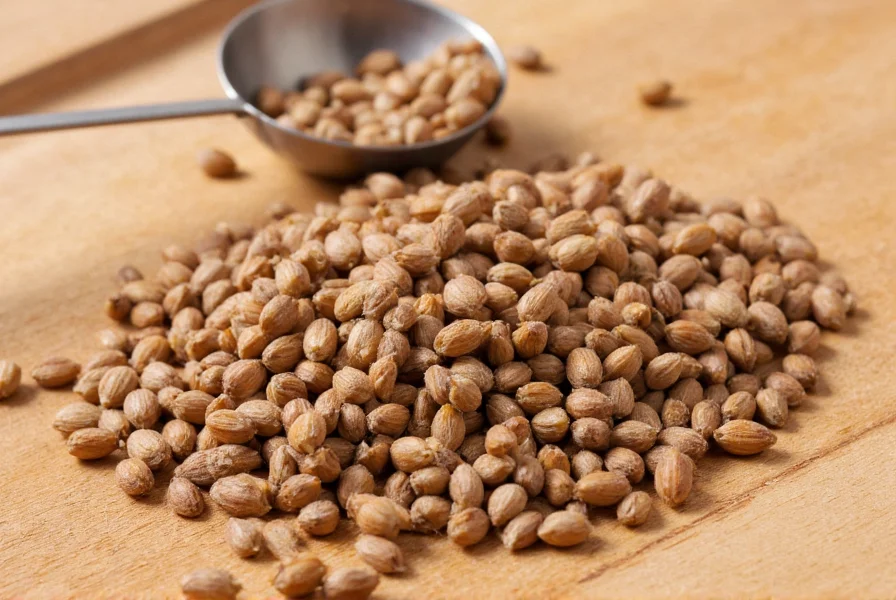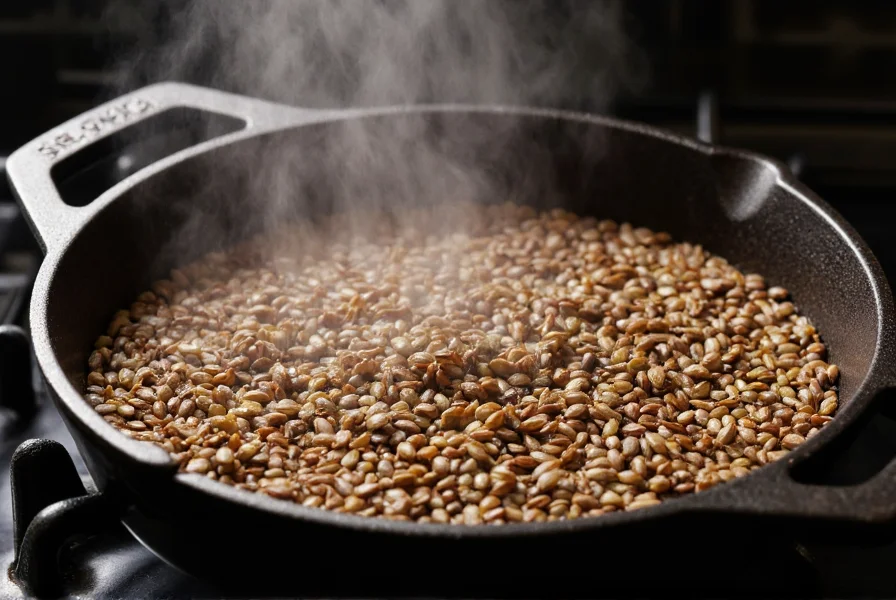Often mistaken for similar-looking seeds, caraway has been valued for centuries not just as a flavor enhancer but also for its potential digestive benefits. Understanding these tiny but mighty seeds can transform your cooking and expand your pantry essentials.
Botanical Background and History
Caraway (Carum carvi) belongs to the Apiaceae family, which includes parsley, dill, and cumin. Native to Europe and Western Asia, this hardy plant has been cultivated since ancient times. Historical records show Egyptians using caraway seeds as early as 2000 BCE, both as food and in medicinal preparations.
The caraway plant grows up to 20 inches tall with feathery leaves and produces small white or pink flowers. What we commonly call “seeds” are actually the plant's fruit — technically known as a schizocarp that splits into two crescent-shaped mericarps when mature. These dried mericarps are what reach our spice racks.

Physical Characteristics and Flavor Profile
Caraway seeds measure approximately 3-6mm in length and display a curved, boat-like shape with five pale ridges running along their length. Their color ranges from light to dark brown, sometimes with a slight olive tint.
The flavor profile of caraway seeds makes them stand out among spices. They offer a complex taste that combines:
- A warm, earthy base note
- Subtle citrus undertones
- Peppery finish
- Faint anise-like sweetness
When crushed or heated, caraway releases essential oils containing carvone and limonene, which create their characteristic aroma. This flavor profile explains what are caraway seeds used for in traditional rye breads, sauerkraut, and various meat dishes where their distinctive taste complements rich flavors.
Culinary Applications Around the World
Caraway seeds feature prominently in numerous global cuisines, each using them in distinctive ways:
| Region | Traditional Uses | Signature Dishes |
|---|---|---|
| Central Europe | Bread seasoning, cabbage dishes | Rye bread, sauerkraut, goulash |
| Middle East | Meat rubs, rice dishes | Kibbeh, various pilafs |
| North Africa | Spice blends, stews | Harissa, tagines |
| Scandinavia | Akvavit flavoring, potato dishes | Akvavit, boiled potatoes with dill |
Professional chefs often toast caraway seeds before use to enhance their flavor. The seeds work particularly well with root vegetables, apples, pork, and cabbage. For those wondering how to use caraway seeds in cooking, try adding them to potato salad, coleslaw, or even chocolate desserts for an unexpected flavor dimension.
Nutritional Composition and Health Considerations
Caraway seeds pack impressive nutritional value relative to their size. A single tablespoon (6g) contains:
- 20 calories
- 1g protein
- 1.5g dietary fiber
- Significant amounts of iron, magnesium, and calcium
- Antioxidants including flavonoids and phenolic compounds
Traditional medicine has long recognized caraway seeds benefits for digestive health. Modern research suggests caraway may help with:
- Relieving bloating and gas
- Supporting healthy digestion
- Potentially reducing appetite
- Exhibiting antimicrobial properties
While generally safe when consumed in culinary amounts, those with specific health conditions should consult healthcare providers before using caraway medicinally. The caraway seeds nutritional value makes them a worthwhile addition to a balanced diet, but they shouldn't replace medical treatment for digestive issues.
Caraway Compared to Similar Seeds
Many home cooks confuse caraway with other small, brown seeds. Understanding the differences helps prevent recipe mishaps:
- Caraway vs Cumin: While both have earthy flavors, cumin is hotter and more pungent, with a straighter, larger seed. Caraway has more citrus notes.
- Caraway vs Fennel: Fennel seeds are straighter, greener, and have a stronger licorice flavor compared to caraway's more complex profile.
- Caraway vs Dill Seed: Dill seeds are flatter and have a more grassy, dill pickle-like flavor.
Knowing these distinctions helps when you're searching for where to buy caraway seeds or considering substitutions in recipes. While not perfect substitutes, fennel seeds can sometimes replace caraway in a pinch, though the flavor profile will differ noticeably.
Storage and Practical Usage Tips
To maximize freshness and flavor, store caraway seeds properly:
- Keep in an airtight container away from light and heat
- Whole seeds retain flavor longer than ground (up to 2 years vs 6 months)
- Freeze for long-term storage (up to 3 years)
- Toast lightly in a dry pan before use to enhance flavor
When incorporating caraway into recipes, remember that a little goes a long way. Start with 1/4 to 1/2 teaspoon per serving and adjust to taste. For bread recipes, many bakers prefer to mix caraway with a small amount of water or milk first to prevent the seeds from sinking to the bottom during baking.

Common Questions About Caraway Seeds
What exactly are caraway seeds made from?
Caraway seeds are the dried fruit (specifically mericarps) of the caraway plant (Carum carvi). Despite being called “seeds,” they're technically the plant's fruit that splits into two crescent-shaped portions when mature. Each portion contains the actual seed inside.
How do caraway seeds differ from cumin seeds?
While both are small, curved seeds from the Apiaceae family, caraway seeds are smaller (3-6mm vs 4-7mm for cumin), have a more pronounced curve, and feature five distinct ridges. Flavor-wise, caraway has citrus notes with a sweet finish, while cumin is hotter, earthier, and more pungent. Visually, caraway tends to be lighter brown than cumin's reddish-brown.
What are the primary health benefits associated with caraway seeds?
Caraway seeds contain compounds that may support digestive health, including relief from bloating and gas. They're rich in dietary fiber, iron, and antioxidants. Some studies suggest caraway may help regulate blood sugar and have antimicrobial properties, though more research is needed. The seeds also provide small amounts of calcium and magnesium, contributing to bone health.
Can I substitute caraway seeds in recipes if I don't have them?
Yes, though no substitute perfectly replicates caraway's unique flavor. Fennel seeds offer the closest approximation with their mild licorice notes, though they're sweeter. A combination of cumin (for earthiness) and a tiny pinch of anise seed (for the licorice note) can work in some recipes. For traditional dishes like rye bread or sauerkraut where caraway is essential, however, substitutes significantly alter the authentic flavor profile.
How should I store caraway seeds to maintain their flavor?
Store whole caraway seeds in an airtight container away from light, heat, and moisture. A cool, dark cupboard works well for short-term storage (6-12 months). For longer storage (up to 2 years), keep them in the freezer. Ground caraway loses flavor more quickly and should be used within 6 months. Toasting the seeds lightly before use enhances their aromatic compounds and brings out their full flavor.










 浙公网安备
33010002000092号
浙公网安备
33010002000092号 浙B2-20120091-4
浙B2-20120091-4